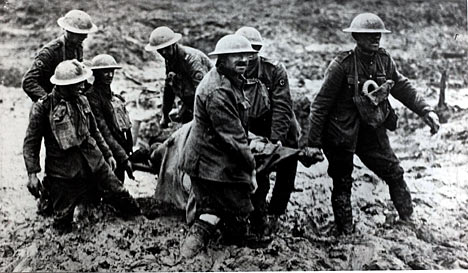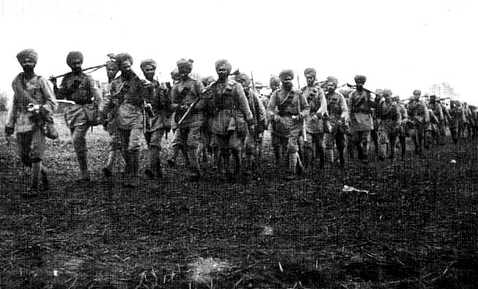A Sea of Mud.
Belgian Walled City Protects Supply Lines for Allies.
Special to The Great War Project
(16-17 October) On the Western Front the ancient walled Belgian city of Ypres and the river that runs through the city, the Yser, is “the last strip of Belgian territory not occupied by the Germans,” reports historian Michael Neiberg.
(Pronounced EE-prah, but the British soldiers look at the spelling and name it “Wipers.”)
The area around the city, labelled the Ypres Salient, “held the key to the defense of the critical supply bases on the French side of the English Channel.”
These are the cities of Dunkirk, Calais, and Boulogne. “Without those ports,” Neiberg reports, “the British Expeditionary Force could not easily resupply itself.
“Thus Ypres had to be held, even if it was difficult terrain to defend.”
It is indeed difficult terrain to defend. This is one of the dreariest landscapes in Western Europe, writes war historian John Keegan, “a sodden plane of wide, unfenced fields…overlying a water table that floods on excavation more than a few spadefuls deep.”
Ypres and the area around it sits below sea level, so…
…digging trenches turns the terrain into a sea of mud, pulling and sucking soldiers into the muck.
It is here that the Germans, and the British, French and Belgians, square off to protect one of the most strategic spots in the war so far.
The Belgians come from a lost battle at Antwerp, “a broken army,” writes Keegan. They erect barricades, and their recovery is quick, hr observes. “Their resistance on the Yser was to win the admiration of their Allies and the respect of the Germans.”
Among the British troops deployed to Ypres are infantry and cavalry units of the Indian Army. They fight gallantly and effectively, Keegan reports. But they are “weak in artillery and without experience in high-intensity operations…and are scarcely suitable for warfare in a European winter climate against a German army.”
The Germans send many school boys conscripted into the German army to Ypres. Among them is Adolph Hitler, an Austrian citizen living in Munich. Hitler writes a personal appeal to the King of Bavaria, asking to be inducted into the German army. He is successful.
On these days 16-17 October 1914, both sides are skirmishing and preparing for something bigger. Many soldiers are bored. One British gunner writes: “We are getting fed up with all this waiting and are anxious to get in action. Weather is dull and cold. Heard the enemy was falling back a few miles.”
The battle coming this October will be only the first Battle of Ypres, the first of three.
No one imagines that the fight for Ypres will become so crucial and strategic. Nor that, according to historian Max Hastings, it will become the place where “more than 200,000 British soldiers would find their graves.”


